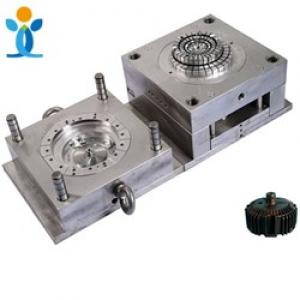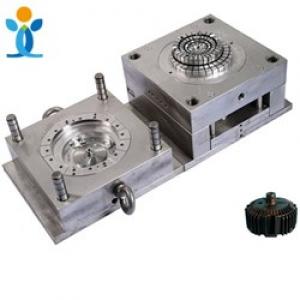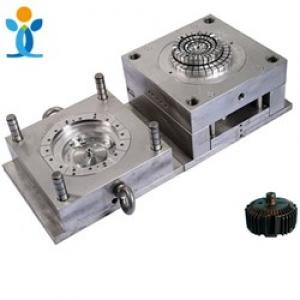Factors affecting the filling pressure of melt
There are many factors that affect the filling pressure of melt。
Material factors, such as type and viscosity of plastics;
Structural factors, such as the type, number and location of the gating system,
the shape of the mold cavity and the thickness of the product, etc;
Forming process elements.
Injection time
The injection time here refers to the time required for the plastic melt to
fill the cavity, excluding the auxiliary time such as mold opening and closing.
Although the injection time is very short and has little influence on the
molding cycle, the adjustment of injection time has a great effect on the
pressure control of gate, runner and cavity. Reasonable injection time is
helpful to the ideal filling of melt, and it is very important to improve the
surface quality of products and reduce the dimensional tolerance.
The injection time is much lower than the cooling time, about 1 / 10 ~ 1 / 15
of the cooling time, which can be used as the basis for predicting the whole
molding time of plastic parts. In the mold flow analysis, only when the melt is
completely driven by the screw rotation to fill the cavity, the injection time
in the analysis results is equal to the injection time set in the process
conditions. If the pressure maintaining switch of screw occurs before the
cavity is filled, the analysis result will be greater than the setting of
process conditions.
Injection temperature
Injection temperature is an important factor affecting injection pressure.
There are 5-6 heating sections in the barrel of injection molding machine, and
each raw material has its proper processing temperature (for detailed
processing temperature, please refer to the data provided by the material
supplier). The injection temperature must be controlled within a certain range.
Too low temperature and poor plasticization of melted material affect the
quality of formed parts and increase the process difficulty; too high
temperature makes raw materials easy to decompose. In the actual injection
molding process, the injection temperature is often higher than the barrel
temperature, the higher value is related to the injection rate and material
performance, up to 30 ℃.
This is due to the high heat generated by the shearing of the melt through the
injection port. There are two ways to compensate for this difference in mold
flow analysis: one is to measure the temperature of the melt when it is
injected into the air, the other is to include the nozzle when modeling.
Pressure maintaining pressure and time
At the end of the injection molding process, the screw stops rotating and only
pushes forward. At this time, the injection molding enters the pressure maintaining
stage. In the process of pressure maintaining, the nozzle of the injection
molding machine continuously feeds the cavity to fill the volume that is
vacated due to the shrinkage of the part. If the cavity is filled without
pressure maintaining, the part will contract about 25%, especially the
shrinkage trace at the rib due to excessive shrinkage. Generally, the pressure
maintaining pressure is about 85% of the maximum filling pressure, which should
be determined according to the actual situation.
Back pressure
Back pressure refers to the pressure to be overcome when the screw reverses and
retreats to store materials. High back pressure is conducive to the dispersion
of pigment and the melting of plastic, but at the same time, it prolongs the
screw retraction time, reduces the length of plastic fiber, and increases the
pressure of injection molding machine. Therefore, the back pressure should be
lower, generally no more than 20% of the injection pressure. When injection
molded foam, the back pressure should be higher than the pressure formed by the
gas, otherwise the screw will be pushed out of the barrel. Some injection
molding machines can program the back pressure to compensate for the reduction
of screw length during melting, which will reduce the input heat and make the
temperature drop. However, because the result of this change is difficult to
estimate, it is not easy to adjust the machine accordingly.



